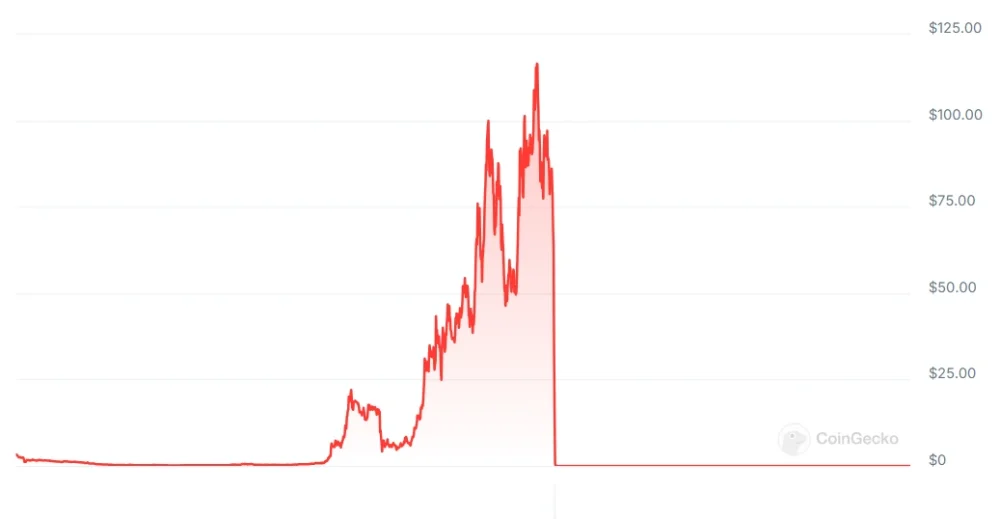Introduction
Indeed, the cryptocurrency landscape has seen its fair share of meteoric rises and devastating falls, and the Terra Luna saga stands out …
Unfortunately, as one of the most dramatic and impactful events in recent memory.
This once-promising project, hailed as a revolutionary blockchain ecosystem. Quickly unraveled, then wiping out an estimated $60 billion in value and shaking the foundations of the entire crypto industry.
So is a question: was Terra Luna a scam, or simply a victim of market forces and missteps?
The Rise and Fall of Terra Luna

Firstly, the Terra blockchain network, launched in 2018 by South Korean entrepreneur Do Kwon and his team at Terraform Labs.
Quickly gained traction in the cryptocurrency space. In fact, its native token, LUNA, and its algorithmic stablecoin. But, TerraUSD (UST), were touted as innovative solutions to the volatility that plagues many digital assets.
LUNA’s role was to maintain the peg of UST, which was designed to hold a stable value of around $1, so it was all very innovative and convincing.
At the height of its popularity, LUNA soared to over $100 per token. Then, minting countless crypto millionaires and earning Do Kwon a cult-like following among retail investors.


The project’s success was largely driven by the Anchor Protocol. A decentralized lending platform that offered an eye-catching 20% annual yield for UST deposits. This high-yield incentive became the primary driver of demand for the stablecoin!
As much as 72% of UST being locked in Anchor at one point.
The UST Depegging Event
However, the stability of this system relied heavily on the delicate balance between LUNA and UST.
When that balance was disrupted, the consequences were catastrophic. In May 2022, a large withdrawal of UST from the Anchor Protocol, coupled with broader market volatility, caused the stablecoin to lose its peg to the US dollar. This set off a chain reaction that quickly spiraled out of control.
As UST started to trade below $1, traders began to arbitrage the discrepancy by exchanging UST for LUNA, minting more of the latter token. This influx of newly minted LUNA put significant selling pressure on the asset, causing its price to plummet.
Within a matter of days, LUNA had lost nearly all of its value, dropping from over $100 to a fraction of a penny.
The Aftermath and Regulatory Scrutiny
The collapse of Terra Luna had far-reaching consequences, both for the project’s investors and the broader cryptocurrency market.
Numerous high-profile players, including Celsius Network and Three Arrows Capital, were severely impacted by the crisis, leading to their eventual downfall. The event also contributed to the broader crypto market downturn, with Bitcoin and other major digital assets suffering significant losses.
In the wake of the disaster, regulatory authorities around the world have taken a closer look at the Terra Luna project and its founders.
In September 2022, a South Korean court issued an arrest warrant for Do Kwon, accusing him of violating local market laws.
Investors who lost money have also filed complaints, alleging fraud and illegal fundraising practices.
Scam or Misfortune?

The collapse of Terra Luna has sparked a heated debate within the crypto community and beyond, with some labeling it as an outright scam. While others argue that it was simply a case of a project succumbing to market forces and poor design choices.
The Scam Perspective
Those who believe Terra Luna was a scam point to several concerning factors, including the unsustainable Anchor Protocol yields, the lack of real-world use cases for UST, and the opaque nature of the project’s governance and decision-making processes. Some have also raised questions about the potential involvement of Terraform Labs and its leadership in manipulating the market.
Moreover, the arrest warrant issued for Do Kwon and the ongoing legal proceedings have further fueled the perception that the project was built on deception and unethical practices. Proponents of this view argue that Terra Luna was a elaborate Ponzi scheme, designed to enrich its founders at the expense of unsuspecting investors.
The Misfortune Perspective
On the other hand, those who believe Terra Luna was not a scam point to the project’s initial promise and the genuine efforts of its team to address the challenges that ultimately led to its downfall.
They argue that the collapse was primarily the result of the inherent flaws in the design of algorithmic stablecoins, which struggled to maintain their peg during times of market stress.
Supporters of this view also highlight the broader market conditions that contributed to Terra Luna’s demise, such as the broader crypto market downturn and the impact of rising interest rates.
They contend that while the project’s failure was undoubtedly devastating, it does not necessarily mean that the founders had malicious intentions or engaged in fraudulent activities.
Terra Luna Price in Depth

The Terra Luna example perfectly illustrates the cryptocurrency of one bull market.
Now we know that the entire project was simply a scam.
Price behavior is perfectly shown by investors and traders reacting, but it was too late.
Interestingly, the project’s listing price was not low. Investors of all kinds were convinced of the wisdom of the investment.
So, let me remind you, the price was almost $3 per unit. For cryptocurrencies, this is not small.
After being listed from May 2019, the price fell to the bottom for a year at $0.13 per unit.
Since April 2020, the price has recovered and there has been a slow turnaround. The price steadily increased until March 2021. There was a mini bull market with a correction.
The correction ended with a drop from around $22 to $5 and then a price boom occurred.
Ultimately, in April 2022, the peak of the bull market occurred. And the price will surprise many people… ATH was $119.18 per unit. Then there was a turn towards a bear market.
You don’t see prices soaring to the bottom often. IT was a price crash.
Less than a month after the price peak, the price soared to 100% losses. In May 2022, there was a huge panic and the price went to $0.001 per unit.
Stablecoin Luna ended in a drastic fiasco!
The Lessons Learned

Regardless of whether Terra Luna was a scam or a victim of circumstance, the project’s collapse … Undoubtedly project left a lasting impact on the cryptocurrency industry.
The event has underscored the importance of robust risk management, but not only. Transparent governance, and the need for regulatory oversight to protect investors is important as well.
Rebuilding Trust in the Terra Ecosystem
In the aftermath of the disaster, Terraform Labs has attempted to rebuild trust in the Terra ecosystem by launching a new blockchain, Terra 2.0, and a rebranded LUNA token. The aim is to learn from the mistakes of the past and create a more sustainable and transparent platform.
However, the success of this new venture remains uncertain, as the project continues to face regulatory scrutiny and skepticism from the broader crypto community.
Potential investors are urged to exercise caution and conduct thorough due diligence before committing their funds to any new Terra-related initiatives.
Future of Algorithmic Stablecoins
The collapse of Terra Luna has also sparked a wider conversation about the role of regulators in the cryptocurrency space. Policymakers around the world are now grappling with the challenge of how to effectively oversee and mitigate the risks posed by innovative financial instruments like algorithmic stablecoins.
The outcome of the legal proceedings against Do Kwon and Terraform Labs will likely have far-reaching implications for the future of such projects.
It remains to be seen whether regulators will impose stricter guidelines or even outright bans on the creation and use of algorithmic stablecoins, which have proven to be vulnerable to market volatility and potential manipulation.
Conclusion
The Terra Luna only remind that the cryptocurrency market is still a highly speculative and volatile domain.
Even the most promising projects can quickly unravel, in fact. As the industry continues to evolve, investors and enthusiasts alike must approach this space with a critical eye, at first.
While the allure of outsized returns may be tempting, the cautionary tale of Terra Luna underscores the importance of diversification.
By learning from the mistakes, the crypto community can work towards building a more resilient and trustworthy ecosystem.

Leave a Reply
You must be logged in to post a comment.